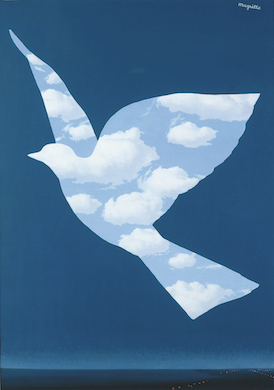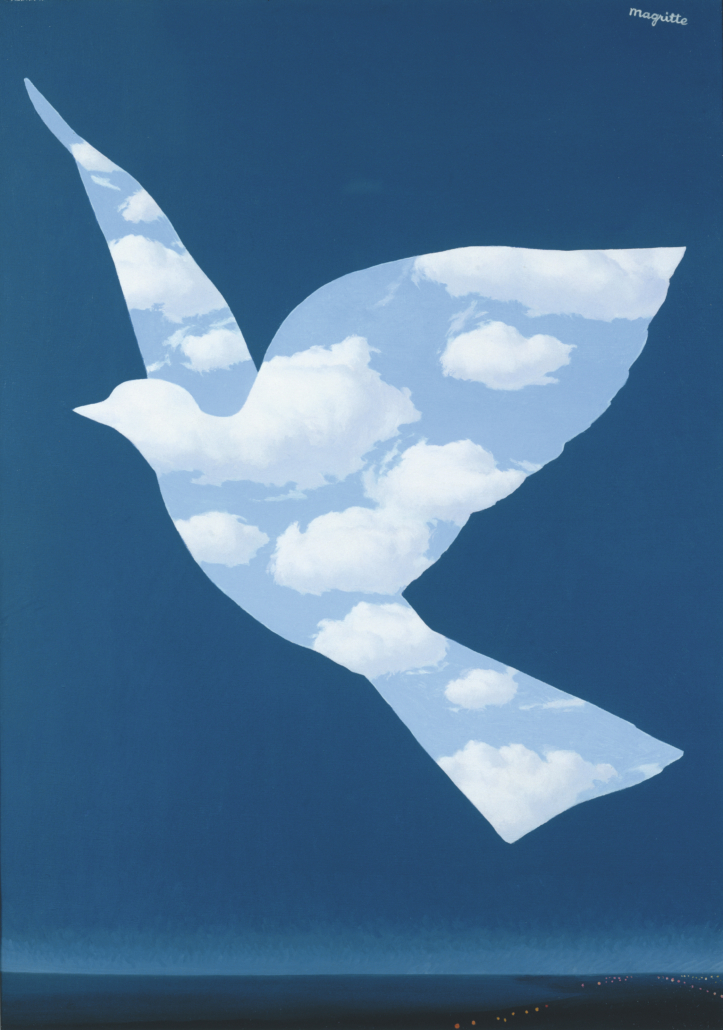
MADRID – The Museo Nacional Thyssen-Bornemisza is holding the first retrospective in Madrid on the Belgian artist and leading Surrealist Rene Magritte (1898-1967) since the exhibition held at the Fundacion Juan March in 1989. Its title, The Magritte Machine, emphasizes the repetitive and combinatorial element present in the work of this painter, whose obsessive themes constantly recur with innumerable variations. The show opened September 14 and continues through January 30, 2022.
Curated by Guillermo Solana, the museum’s artistic director, The Magritte Machine benefits from the collaboration of Comunidad de Madrid and features more than 95 paintings loaned from institutions, galleries and private collections around the world, thanks to the support of Magritte Foundation and its president Charly Herscovici. The exhibition is completed with a selection of photographs and amateur films by Magritte himself, which is part of a traveling exhibition curated by Xavier Canonne, director of the Musee de la Photographie de Charleroi, and which will now be shown in a special installation.
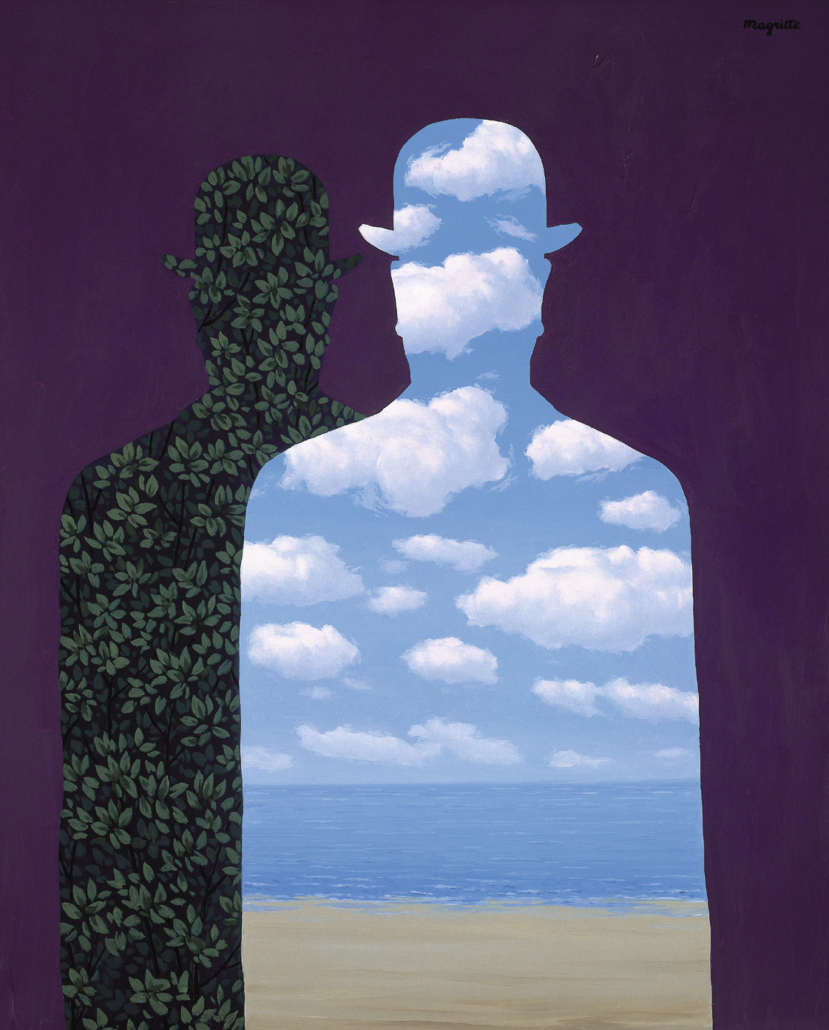
In 1950 Rene Magritte and some of his Belgian Surrealist friends produced a catalog of products of a supposed cooperative society, La Manufacture de Poesie, which included items intended to automate thinking and creation, including “a universal machine for making paintings,” described as “very simple to use, within the reach of everyone” and which could be used to “compose an almost unlimited number of thinking paintings.”
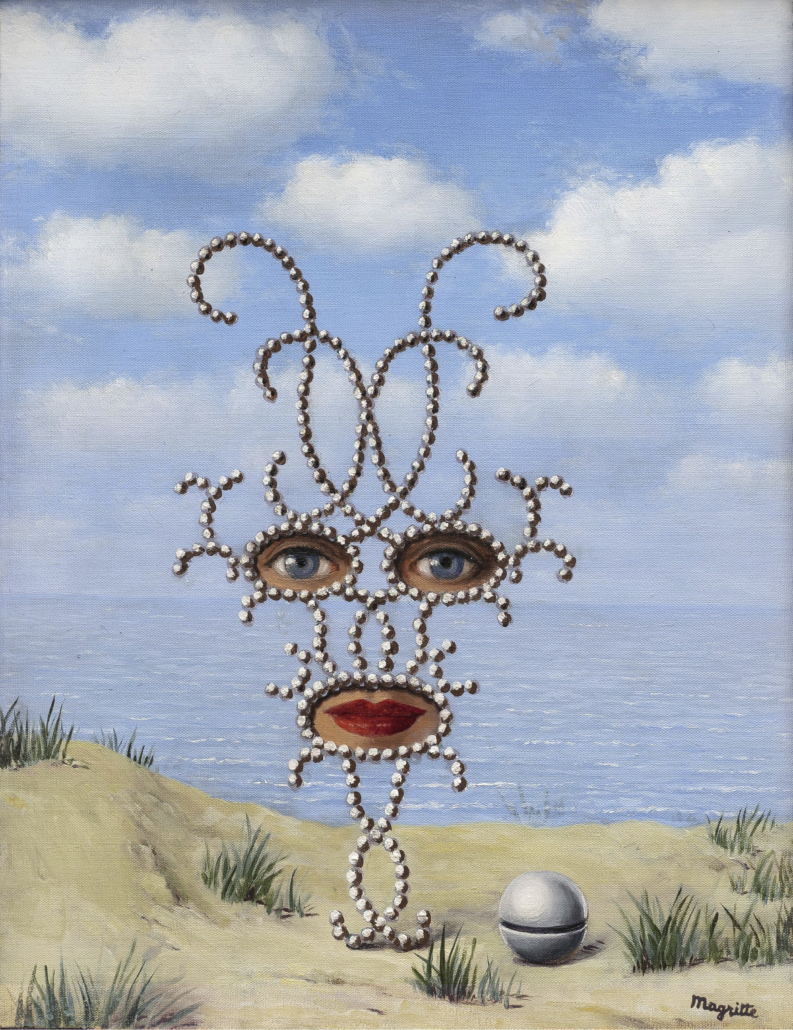
The painting machine had precedents in avant-garde literature, such as those devised by Alfred Jarry and Raymond Roussel, forerunners of Surrealism, whose inventions emphasized the physical process of painting, albeit through opposing concepts: in the former’s the machine revolved and sprayed out jets of paint in all directions, while the latter’s resembled a printer that produced photo-realist images. The device described by the Belgian Surrealists is different and was intended to generate images that were aware of themselves. The Magritte machine is a metapictorial one, a machine for producing thinking paintings and ones that reflect on painting itself.
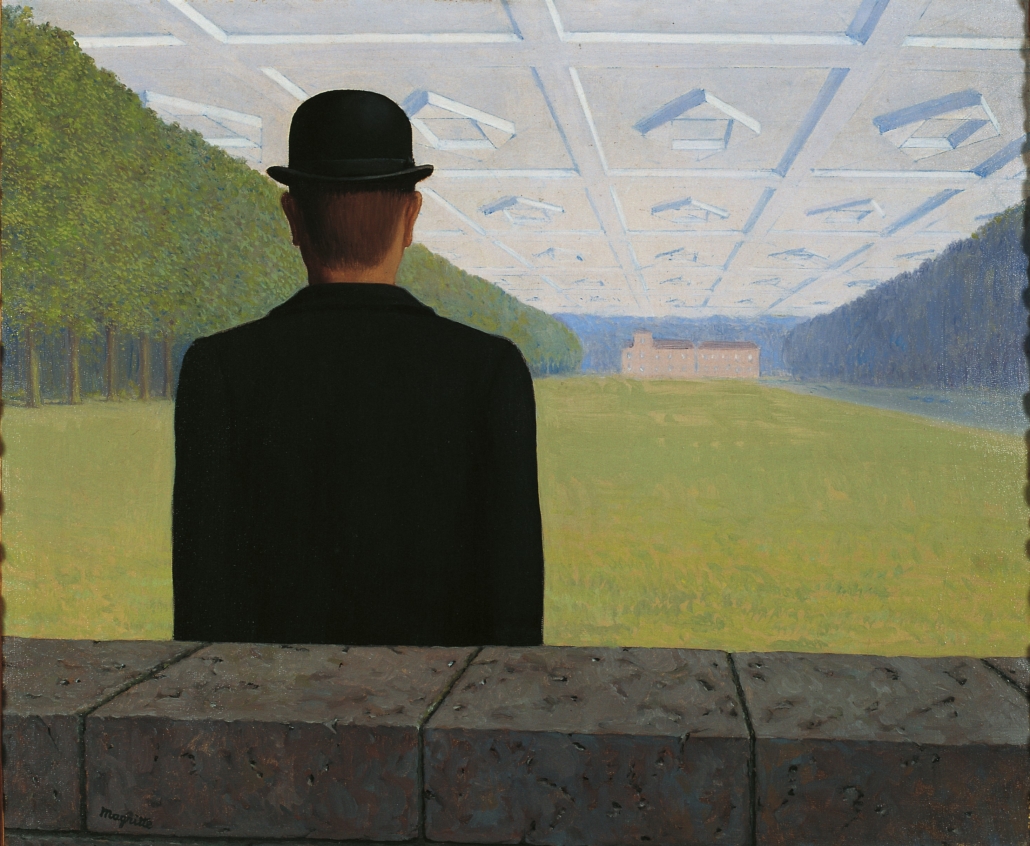
Magritte defined his painting as an art of thinking. Despite his well-known opposition to automatism as a central procedure of Surrealism, he seemed to confer an intellectual value on the de-personalization and objectivity of that auto-reproduction of his work. The Magritte Machine is not coherent and closed in the manner of a system; rather, it is an interactive procedure involving discovery. It is also recursive as the same operations constantly repeat themselves but with different results every time.
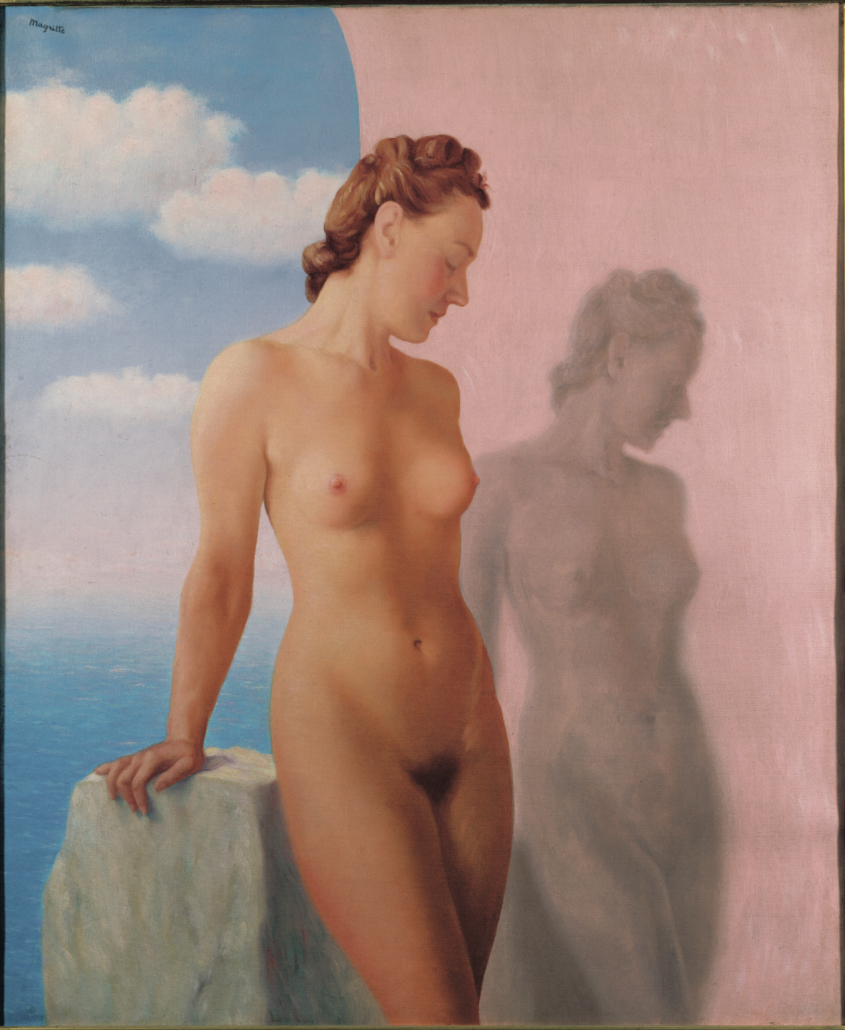
All of Magritte’s art is a reflection on painting itself, a reflection it undertakes using paradox as a fundamental tool. What is revealed in a painting, either through contrast or contradiction, is not just the object but also its representation, the painting itself. When painting is limited to reproducing reality, the painting disappears and only reappears when the painter sets everything at odds: painting only becomes visible through paradox, the unexpected, the unbelievable and the odd.
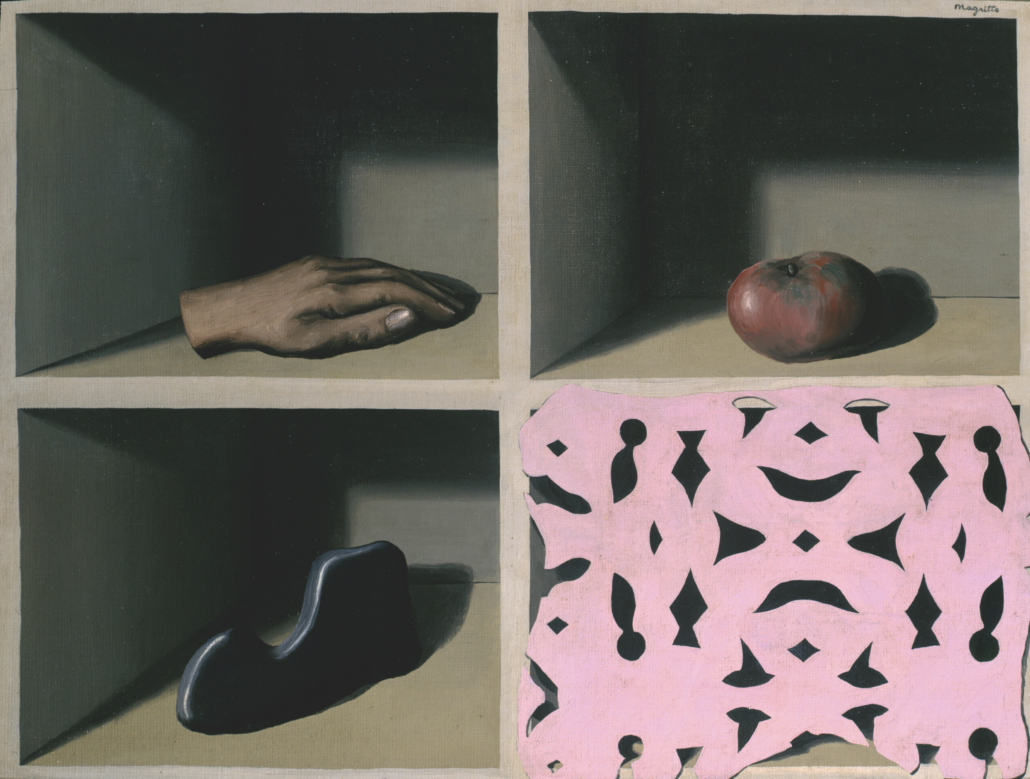
In order to achieve this aim, Magritte used the classic resources of metapainting, of the representation of the representation (the painting within the painting, the window, the mirror, the figure seen from behind) which become deceptions in his work. The present exhibition analyzes these metapictorial devices, which are the guiding thread of the different sections.
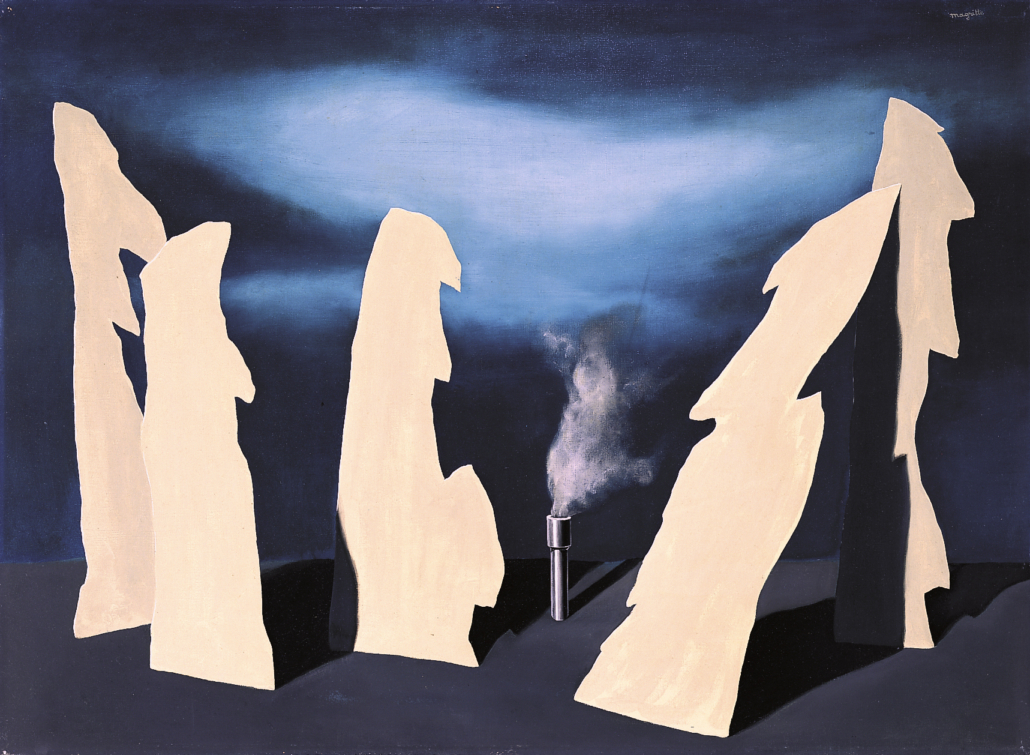
The first section is entitled “The magician’s powers” and includes various self-portraits which explore the figure of the artist and the superpowers attributed to him. The next section is “Image and word,” which focuses on the introduction of writing into painting and in the conflicts generated between textual and figurative signs, followed by the third section, “Figure and background”, which examines the paradoxical possibilities generated by the inversion of the figure and background, silhouette and void.
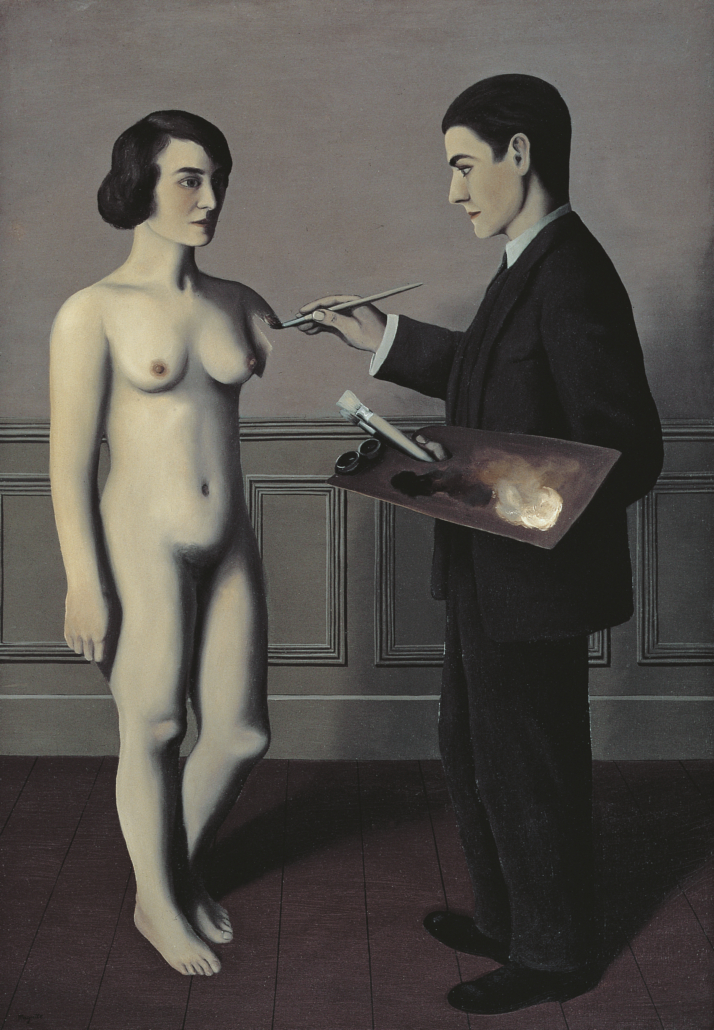
“Picture and window” analyzes the painting within the painting, which is Magritte’s most common metapictorial motif, while “Face and mask” focuses on the suppression of the face in the human body, one of Magritte’s most frequently used devices. The two final sections look at opposing processes of metamorphosis, namely “Mimicry” and “Megalomania.” The first introduces Magritte’s fascination with animal camouflage, which he transferred to objects and bodies that conceal themselves in their setting, in some cases dissolving into space, while the final section presents the device of change of scale as an anti-mimetic movement, extracting the object from its normal setting and projecting it outside of any context.
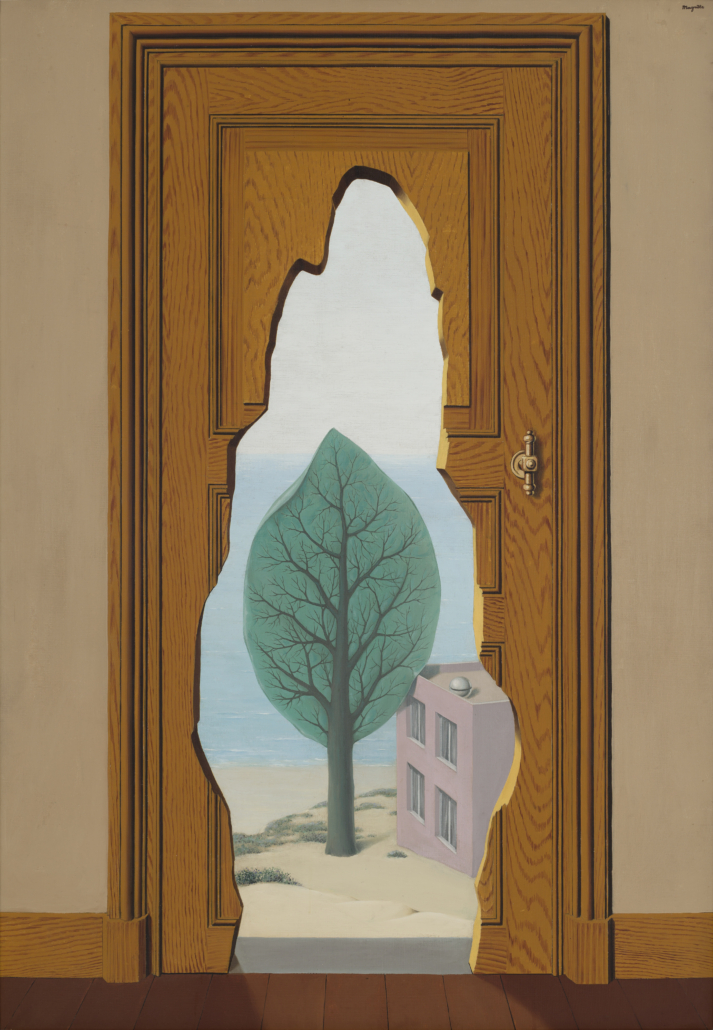
The Magritte Machine is completed with an installation in the Museum’s first floor Balcony Gallery. It presents a selection of photographs and amateur films made by the artist himself. Magritte never considered himself a photographer, but he was undoubtedly interested in film and photography in his daily life.
Rediscovered in the mid-1970s, these snapshots of his Surrealist friends, various self-portraits and photographs of the paintings that he was working on, as well as reels of film shot by the artist are presented in the exhibition in the manner of a family album. They include remarkable images filled with Magritte’s unique spirit.
Rene Magritte. Photographs and films is a selection of pieces from the exhibition The Revealing Image, curated by Xavier Canonne, director of the Musee de la Photographie in Charleroi. This display can be visited free of charge.
Visit the website of the Museo Nacional Thyssen-Bornemisza and see its dedicated page for The Magritte Machine.


